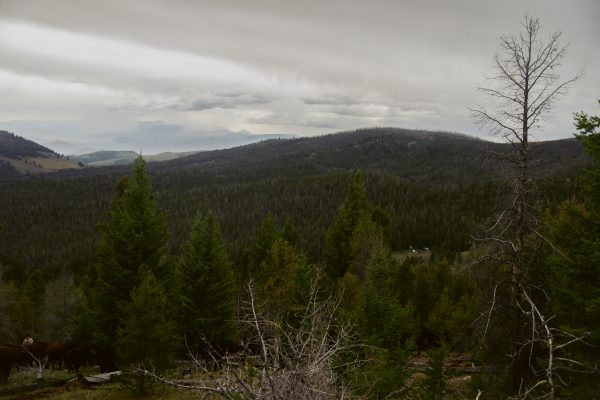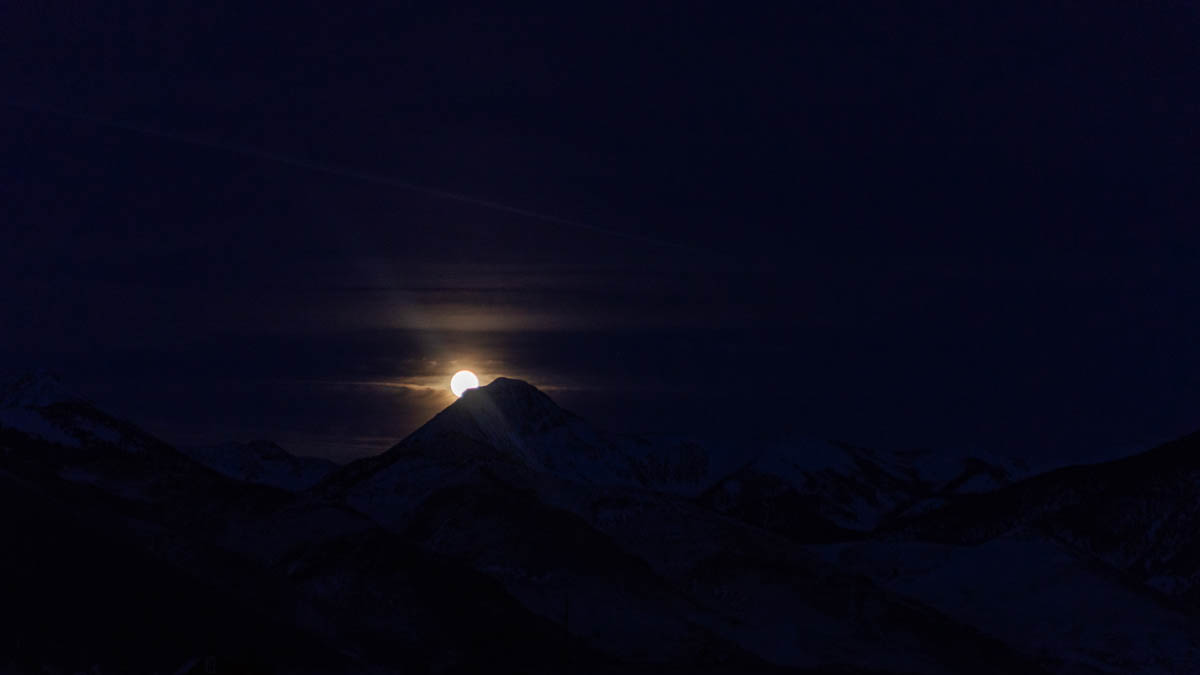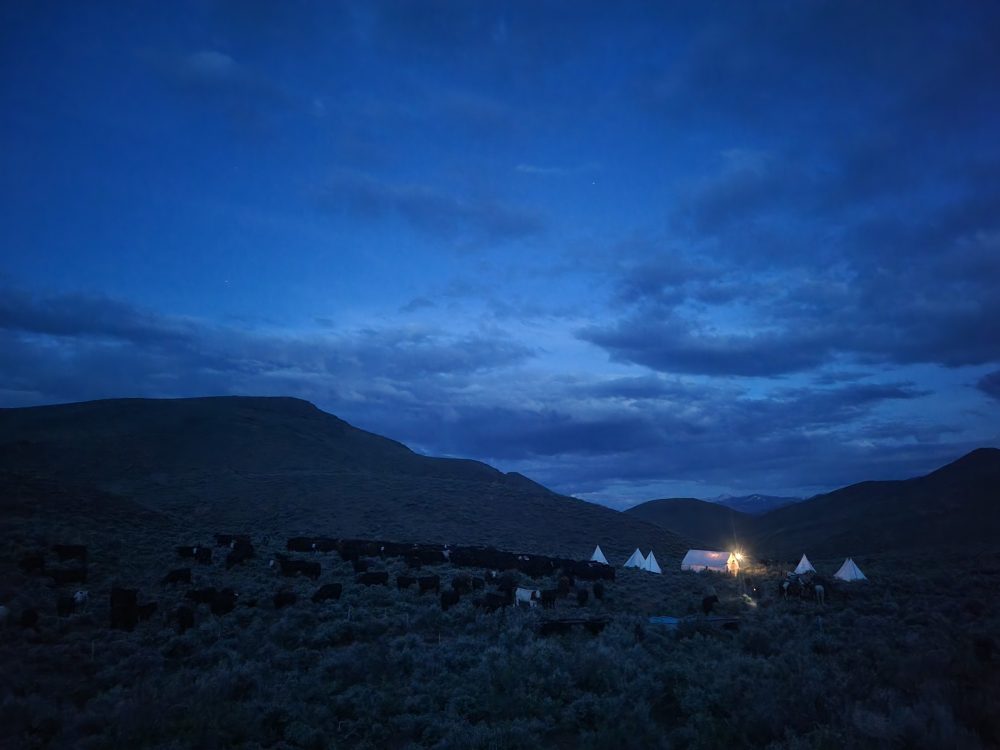 It looks like Winter’s threats may indeed be real. She has been shaking her cold fist at us now after we were spoiled by a few weeks of warmth and the promise of spring. As I write, icy winds that come straight off the Arctic are sweeping the ranch, snow included. Caryl was thinking about planting some nursery stock around our log home (yes, for those that have been with us awhile, we are finally moved out of the little bunkhouse and into the main house). I haven’t heard her mention anything about planting for several days now.
It looks like Winter’s threats may indeed be real. She has been shaking her cold fist at us now after we were spoiled by a few weeks of warmth and the promise of spring. As I write, icy winds that come straight off the Arctic are sweeping the ranch, snow included. Caryl was thinking about planting some nursery stock around our log home (yes, for those that have been with us awhile, we are finally moved out of the little bunkhouse and into the main house). I haven’t heard her mention anything about planting for several days now.
It doesn’t mean that we quit getting ready for those lovely summer days. Irrigation systems need readied, meadows are being harrowed, and young, fragile pastures with spring growth are being temporarily fenced off from beeves, who incessantly search for the color green.
What’s In the Water?
I received emails from several of you in reference to my last newsletter! All of you “live correspondents from the field” agreed that Alderspring beef has indeed improved in terms of flavor over the last several years! I think it is not necessarily the degree of flavor, but the complexity of flavors that we are seeing, and the combination of new flavor factors equals, I think, a higher level of nutritional complexity.
Think symphony instead of solo, and the only change we can come up with in our flavor protocol is the increasing quality of our soil and the more diverse species mix on our grasslands. We’ve been working over the past decade to increase the number of species in our pastures, and are happy to see that success translate into better gains, better health, and better flavor in our beef.
Several other folks asked about the fertilizer I talked about in our last newsletter, and if ranchers in our valley fertilize with petroleum based nitrogen amendments. First off, just to make things window-pane clear, we do not ever use any of these fertilizers on Alderspring. Some ranchers in our valley do (there is very little row crop agriculture, but some ranchers use fertilizer on their pastures and alfalfa hay fields to boost yields). The concern raised was about water contamination.
The difference between fertilizer application in our semi-desert environs and the rainy Midwest or East Coast is that runoff is almost impossible in our valley. It’s because it rarely rains. Our yearly average rainfall (including winter snowfall) is less than 10 inches in our valley. I can’t remember a time that I have seen rain runoff go overland and end up in the river.
In addition, most of the land along the river is subirrigated, and too wet to farm. These boggy bottoms are primarily grazed when frozen, and are not very responsive to fertilizer so no one wastes their fertilizer money on them. This creates an additional runoff buffer of tall grasses and boggy bottoms. River contamination by fertilizer in our valley is a long shot at best. I think it’s why there is a healthy trout and salmon fishery in the Pahsimeroi. Those species do not do well in polluted areas as the invertebrates they feast on do poorly in contaminated water.
It mattered to those folks who wrote me with questions because they were concerned our beeves could be contaminated by fertilizer use. The fact is that for over 99% of the time on the home ranch, Alderspring beeves drink from non-river sources.
On our ranch, all of the Pahsimeroi River is fenced to protect fish and wildlife habitat along the river. If you watched our recent video [ https://www.youtube.com/watch?v=pXUuj4JZuxg ] about the river fencing projects, you would have learned about how we only use those pastures in the dead of winter (and at that time, beeves can drink from river). Many years, however, we do not use these riverside pastures at all, because the point of grazing them is to maintain a mosaic of open meadow and willow copses.
Our primary water sources on the home ranch are from groundwater. We have a free-flowing spring that runs warm throughout the year and never freezes. The rest of the beeves’ drinking water comes from a ground water well, and an underground piping system that brings the drinking water to tanks distributed around the ranch as an integral part of our intensive grazing system. The groundwater originates in the mountain ranges next to the ranch and there is nothing between us and those mountains but sagebrush and native grass.

It is in those same ranges that our beeves spend the summer. It is essentially wilderness; a completely unfarmed and unsettled wild landscape in excess of 70 square miles. Over 50 miles of trout streams braid through the montain landscape. Since they are much higher than our valley ranch, these mountain ranges receive more rain and snow than we get in the valley. Lush grasslands and forests grow up there—springs and creeks serve as the water source for beeves in that high country.
By definition (and by law, since we do the work to gain inspected organic certification on that area), the wild country of our summer ranges is organic.
Take a minute, if you will, and contrast all of this to the majority of grass-fed beef raised in the US, most of which is not certified organic (organic certification requires a systems plan for providing uncontaminated water). In these operations, cattle commonly drink from surface sources like drainage ditches and creeks bearing agricultural runoff and residue.
People are often concerned about plant and grass contamination from agricultural chemicals, but in my mind, the water the cattle drink is likely a greater issue than forage based residues. These waters may contain nitrates and nitrites from fertilizer, glyphosate, and a host of other agrichemicals.
The World Health Organization named glyphosate, the active ingredient in Roundup, a carcinogen this past week. It seems everyone, from homeowners to corn, wheat and soy farmers, liberally use Roundup here in the US. If you type in “glyphosate water contamination” into an internet search, you’ll get more information than you probably wanted, much from scholarly and government sources.
That’s the context of why we call Alderspring beef a wild protein. Like wild salmon, our beeves are free from contamination. In addition, like wild grazing animals, we allow them to select the things they eat on a plant by plant basis. We think this creates the cleanest, most nutrient-dense protein you can buy. The best tasting too!







Leave a Reply